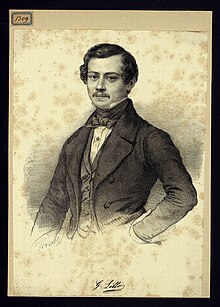
Domenico Gaetano Maria Donizetti was an Italian composer, best known for his almost 70 operas. Along with Gioachino Rossini and Vincenzo Bellini, he was a leading composer of the bel canto opera style during the first half of the nineteenth century and a probable influence on other composers such as Giuseppe Verdi. Donizetti was born in Bergamo in Lombardy. At an early age he was taken up by Simon Mayr who enrolled him with a full scholarship in a school which he had set up. There he received detailed musical training. Mayr was instrumental in obtaining a place for Donizetti at the Bologna Academy, where, at the age of 19, he wrote his first one-act opera, the comedy Il Pigmalione, which may never have been performed during his lifetime.

Giuseppe Persiani was an Italian opera composer.
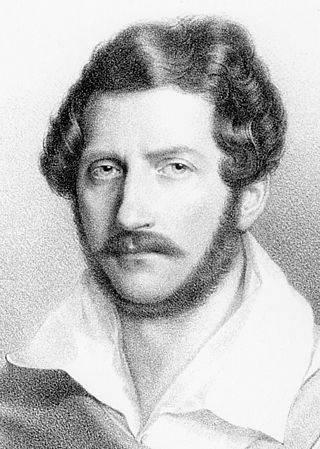
Pia de' Tolomei is a tragedia lirica in two acts by Gaetano Donizetti. Salvadore Cammarano wrote the Italian libretto after Bartolomeo Sestini's verse novella Pia de' Tolomei, which was based on Canto V, vv. 130–136 from Dante's narrative poem The Divine Comedy part 2: Purgatorio. It premiered on 18 February 1837 at the Teatro Apollo in Venice.
Giuseppe Farinelli was an Italian composer active at the end of the 18th century and the beginning of the 19th century who excelled in writing opera buffas. Considered the successor and most successful imitator of Domenico Cimarosa, the greatest of his roughly 60 operas include I riti d'Efeso, La contadina bizzarra and Ginevra degli Almieri. More than 2/3 of his operas were produced between 1800-1810 at the height of his popularity. With the arrival of Gioachino Rossini his operas became less desirable with the public, and by 1817 his operas were no longer performed. His other compositions include 3 piano forte sonatas, 3 oratorios, 11 cantatas, 5 masses, 2 Te Deums, a Stabat Mater, a Salve Regina, a Tantum ergo, numerous motets, and several other sacred works.
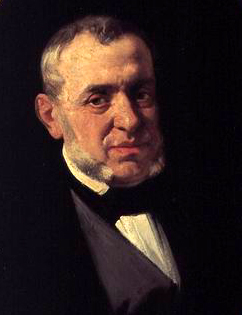
La vestale is an opera by Italian composer Saverio Mercadante. It takes the form of a tragedia lirica in three acts. The libretto, by Salvadore Cammarano, was influenced by Victor-Joseph Étienne de Jouy's libretto for Spontini's more famous 1807 opera of the same name.
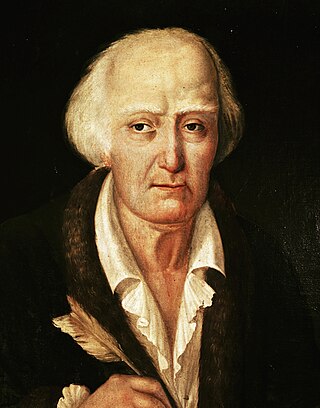
Giacomo Domenico Mario Antonio Pasquale Giuseppe Tritto was an Italian composer, known primarily for his fifty-four operas. He was born in Altamura, and studied in Naples; among his teachers were Nicola Fago, Girolamo Abos, and Pasquale Cafaro. Amongst his pupils were the young Vincenzo Bellini around 1821, plus Ferdinando Orlandi. He died in Naples.

Antonio Cagnoni was an Italian composer. Primarily known for his twenty operas, his work is characterized by his use of leitmotifs and moderately dissonant harmonies. In addition to writing music for the stage, he composed a modest amount of sacred music, most notably a Requiem in 1888. He also contributed the third movement, Quid sum miser, to the Messa per Rossini, a collaborative work created by thirteen composers to honor Gioacchino Rossini.

Gennaro Manna was an Italian composer based in Naples. He was a member of the Neapolitan School. His compositional output includes 13 operas and more than 150 sacred works, including several oratorios.
Luigi Mosca was Italian composer of operas and sacred music and a noted singing teacher. He composed eighteen operas, most of which were originally for theatres in Naples, but played throughout Italy in their day.
Domenico Gilardoni (1798–1831) was an Italian opera librettist, most well known for his collaborations with the composers Vincenzo Bellini and Gaetano Donizetti.
Giuseppe Balducci was an Italian composer, primarily of operas. Born in Iesi, he spent most of his career in Naples and was one of the originators of the "salon opera" genre, the forerunner of chamber opera.

Nicola d'Arienzo was an Italian composer, music pedagogue, and writer on music. He spent his entire career in his native Naples where all but one of his nine of his operas were premiered. His other compositions included instrumental music, sacred music and art songs. From 1909 until 1911, d'Arienzo served as the director of the Conservatory of San Pietro a Majella having taught there since 1875. He also wrote several books on the history and theory of music.

Nicola De Giosa was an Italian composer and conductor active in Naples. He composed numerous operas, the most successful of which, Don Checco and Napoli di carnevale, were in the Neapolitan opera buffa genre. His other works included sacred music and art songs. His songs were particularly popular, bringing him fame as a salon composer both in Italy and abroad. De Giosa died in Bari, the city of his birth, at the age of 66.
Almerindo Spadetta was a prolific opera librettist active in Naples. He worked as a stage manager at the Teatro San Carlo, Teatro Nuovo, and Teatro del Fondo in Naples for over 40 years and wrote numerous libretti for composers associated with those theatres. His most enduring work was the libretto for Nicola De Giosa's Don Checco, one of the last great successes in the history of Neapolitan opera buffa.
Mario Aspa was an Italian composer. He composed over 40 operas, the most successful of which were Paolo e Virginia and II Muratore di Napoli. He also composed two ballets and a Requiem Mass which was performed on the death of Vittorio Emmanuele II in 1878.
Giuseppe Puzone was an Italian opera composer and conductor active in Naples, the city of his birth. He was for many years the principal conductor of the Teatro San Carlo where his opera Elfrida di Salerno had premiered in 1849. He composed three other operas, all of which premiered in Naples, as well as sacred and symphonic music.
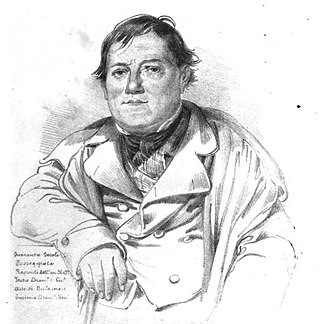
Giovanni Emanuele Bidera was an Italian writer.
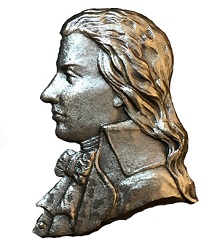
Luigi Capotorti was an Italian composer of both sacred and secular music. He was the maestro di cappella of several Neapolitan churches; the composer of ten operas, five of which premiered at the Teatro San Carlo in Naples; and a teacher of composition and singing whose students included Stefano Pavesi and Saverio Mercadante. Born in Molfetta, he studied violin and composition at the Conservatorio di Sant'Onofrio in Naples and spent his entire career in that city. In his later years, Capotorti retired to San Severo, where he died at the age of 75.
Le due duchesse or La caccia dei lupi is a semiseria opera in two acts by Johann Simon Mayr to a libretto by Felice Romani which was premiered 7 November 1814 at La Scala in Milan and revived in 1819 at the Teatro San Carlo, Naples. Romani used his libretto again with a few changes for a new setting by Filippo Celli (1782–1856) for Florence on 8 September 1824.
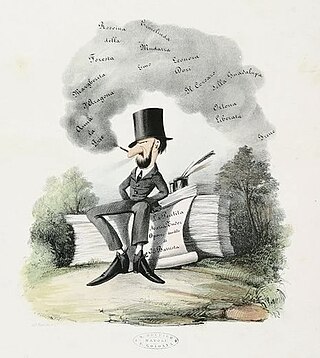
Vincenzo Maria Battista was an Italian composer and conductor. At first his operas were received with enthusiasm by his compatriots. Today none of his works are in the repertoire of any opera companies, despite the fact that in his lifetime they were performed in the most important theatres in Italy.
